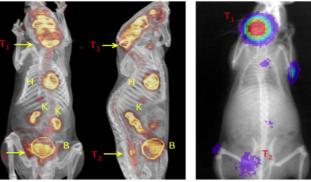Please wait...
About This Project
BBRI and the Greater Los Angeles VA Healthcare System and UCLA
Multiple myeloma (MM) is a cancer of the bone marrow made up of plasma cells, which are a type of antibody-producing white blood cells. Low oxygen levels in the bone marrow increases gene expression in MM tumor cells, and acts as part of an adaptive survival response. We are targeting this response with an experimental drug that blocks expression of these genes and will ask how this affects myeloma biology in the bone marrow. This is a novel approach to treat and study this incurable disease.



